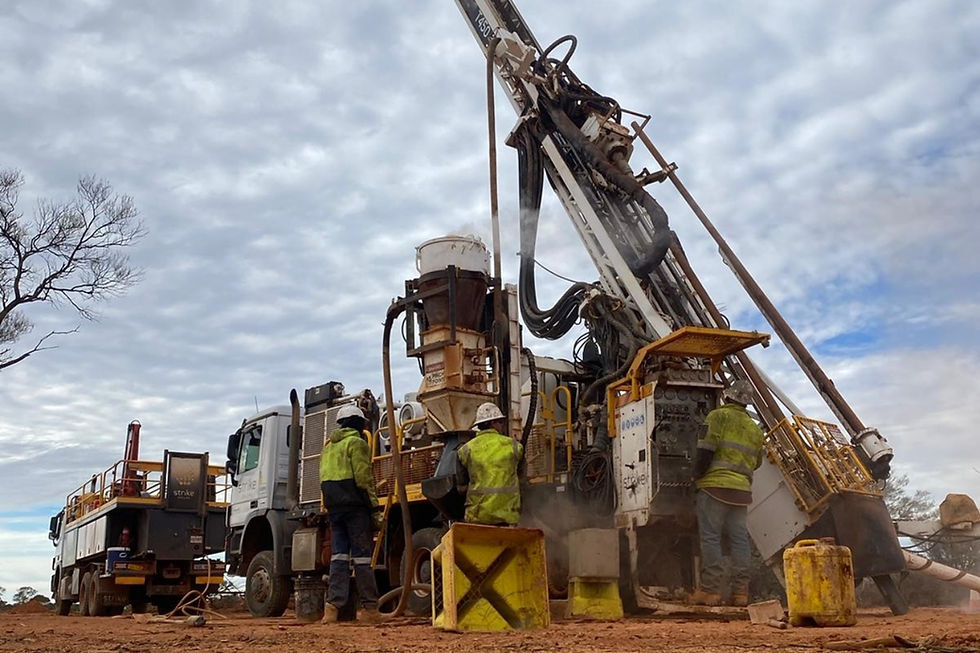Marmota review unveils 8km South Australian uranium target
- Michael Philipps

- Feb 20, 2024
- 3 min read
ASX-listed Marmota has identified a more than 8km-long and 1km wide uranium target after a review into its relatively-untested Yolanda prospect that forms part of the company’s Junction Dam project in South Australia.
Management says the Yolanda area is the third stage of its four-part Junction Dam review and drill program design currently being completed by uranium expert Mark Couzens.

The enticing target sits to the south of the explorer’s known Saffron deposit that has a mineral resource of 5.4 million pounds grading 557 parts per million uranium oxide and which previously produced high-grade results including peak assays of 12,310ppm and 8465ppm uranium oxide. Limited previous drilling at Yolanda returned a 3m intercept grading 646ppm uranium oxide and a peak assay grade of 1258ppm from 124.2m.
The company says it has highlighted significant potential to increase the size of the project’s uranium resource, particularly since its two adjoining uranium prospects, Bridget and Yolanda, already have proven uranium hits from previous drilling. Significantly, they have not yet been included in the current Junction Dam resource.
The next and final stage of the Junction Dam review will be focusing on the NW corner of Marmota’s Junction Dam tenement. Marmota chairman Colin Rose
Management has already set out an exploration target of between 22 and 33 million pounds at 400ppm to 700ppm at the SA operation.
Marmota chairman Colin Rose said: “The identification that a huge 8km of the main Eyre Formation palaeochannel runs through the Yolanda Prospect makes this Marmota’s THIRD exciting uranium exploration target at Junction Dam. The next and final stage of the Junction Dam review will be focusing on the NW corner of Marmota’s Junction Dam tenement immediately adjacent to where Boss has just completed their own drilling program at Jasons. Boss’ best grades come from the Jasons area.”
Due to the limited number of historical holes in the Yolanda area, most of the previous drilling missed the key palaeochannel as well as the corresponding floodplains, meaning the full extent of uranium mineralisation remains untested to date.
However, multiple drillholes at the prospect intersected significant uranium grades, especially in close proximity to the palaeochannel. Management says priority targets have been identified from the completed stratigraphic interpretation, in addition to the state gravity image.
Importantly, Junction Dam sits in the same paleochannel as Boss Energy’s massive Honeymoon uranium project that features a mineral resource of 36 million pounds grading 660ppm uranium oxide. The Jasons deposit at Honeymoon already hosts a JORC-compliant resource of 6.2 million tonnes at 790ppm for 10.7 million pounds of contained uranium oxide.
Highlights from Boss’ recently-completed drilling program at Jasons, close to Junction Dam, returned a 3m hit at 3221ppm uranium oxide from 105.5m, 6m going 1278ppm from 100.5m and 3.25m grading 1509ppm from 104.5m.
Marmota originally stopped work at Junction Dam in 2014 following the aftermath of the Fukushima disaster in Japan. Now, almost 10 years on, it is confident the time is right to re-evaluate and reignite the operation … and a rising tide behind uranium globally seems to support that theory.
The company has already identified four new, high-priority drill targets to the north, east and south of the Saffron resource where the geology is favourable for uranium mineralisation and is supported by stratigraphic modelling, electromagnetic surveys and gravity images.
Is your ASX-listed company doing something interesting? Contact: office@bullsnbears.com.au


